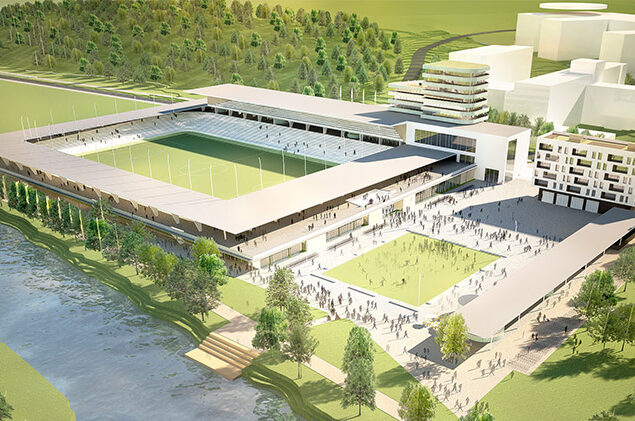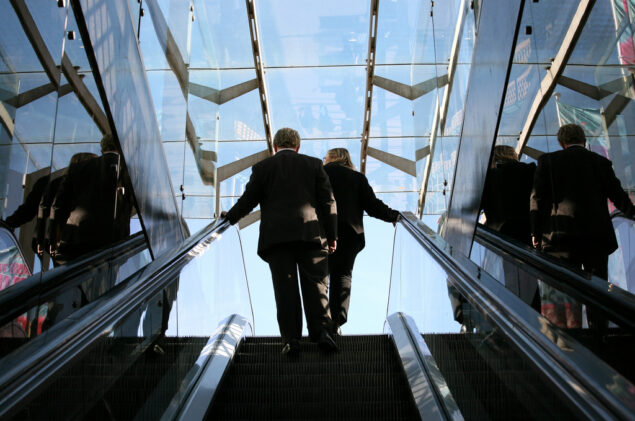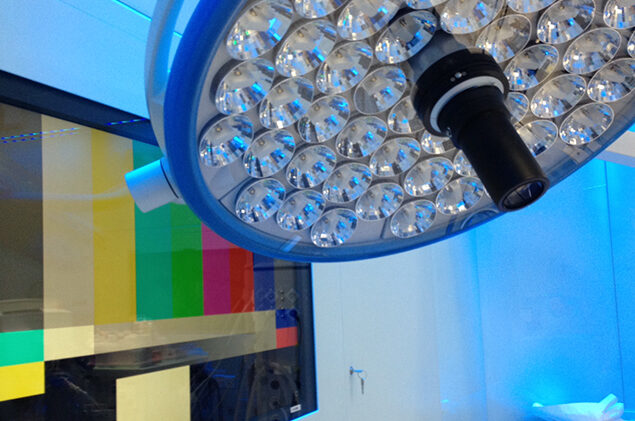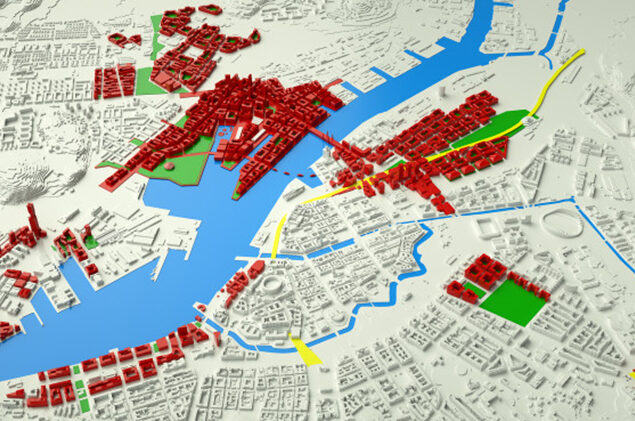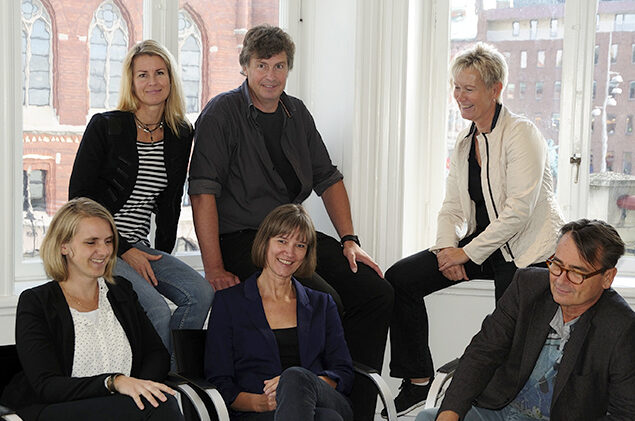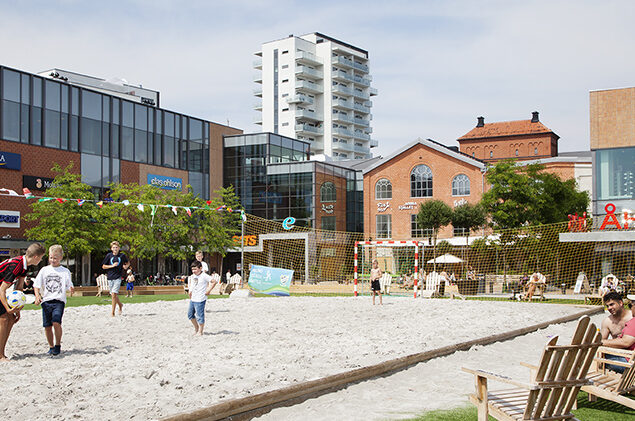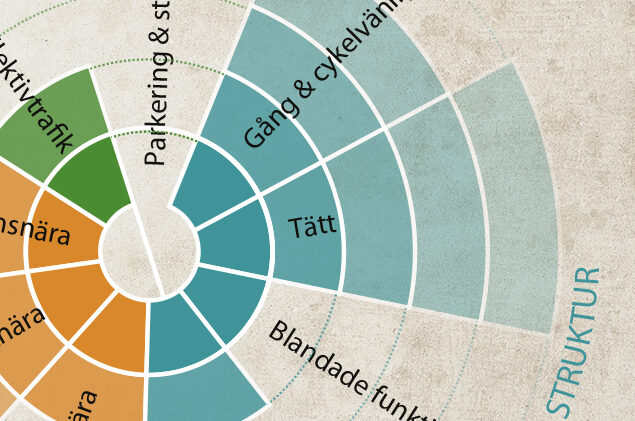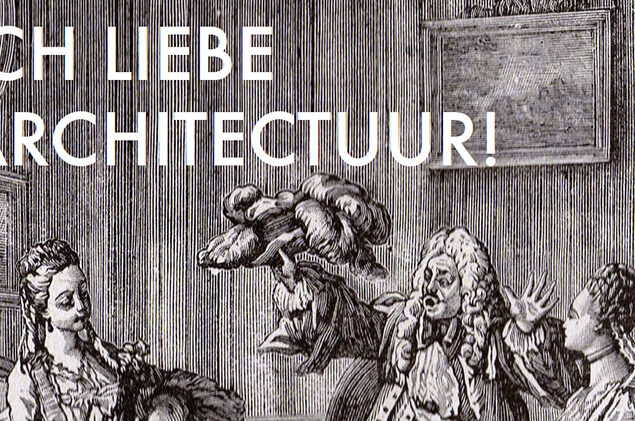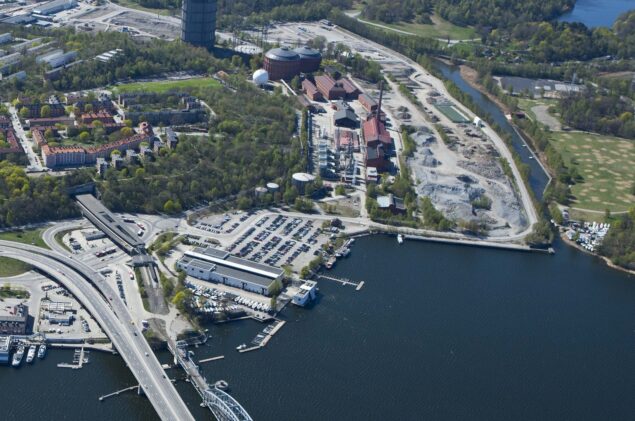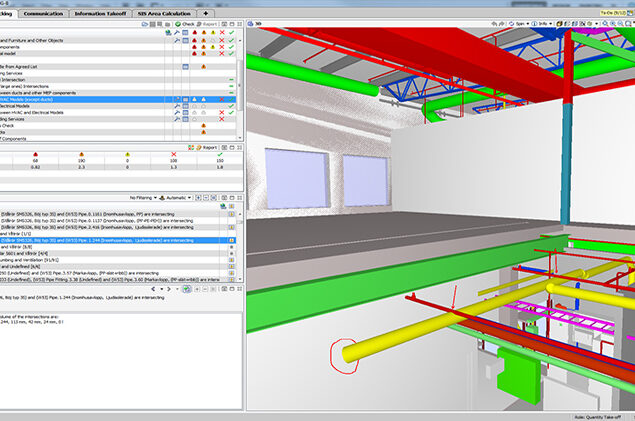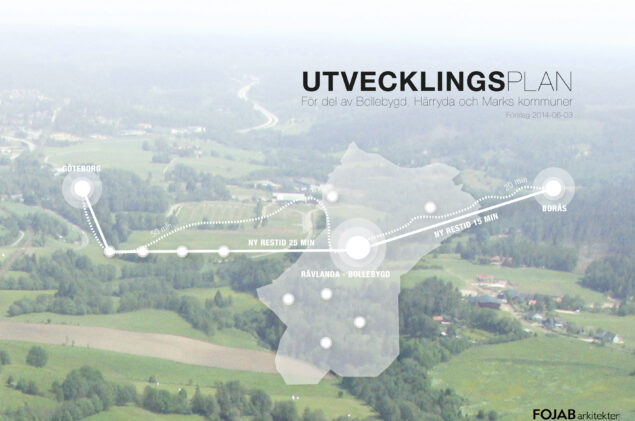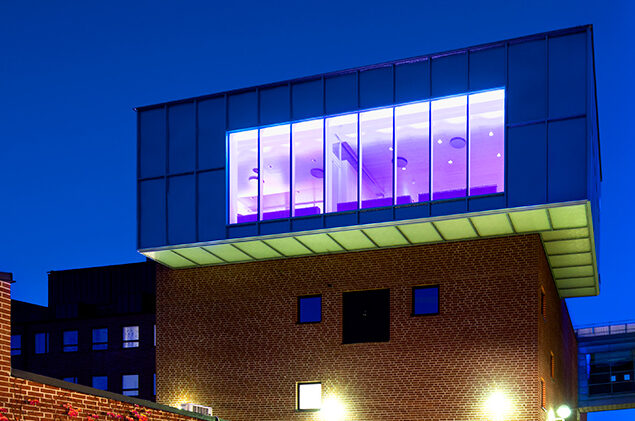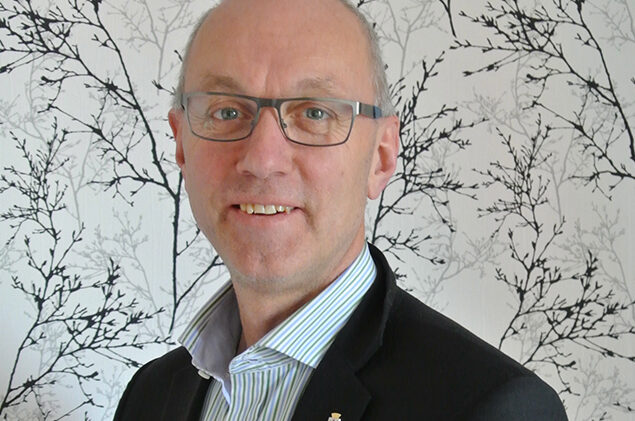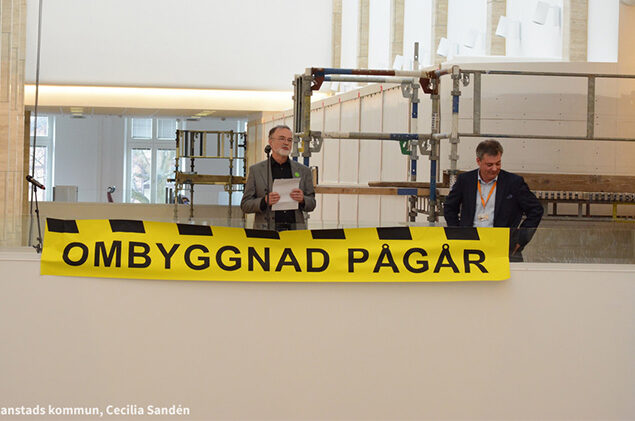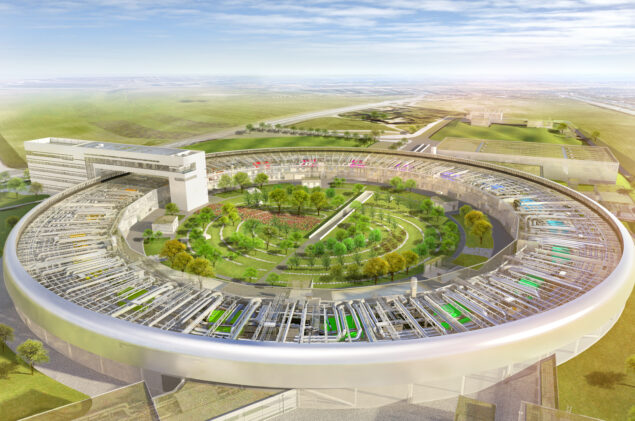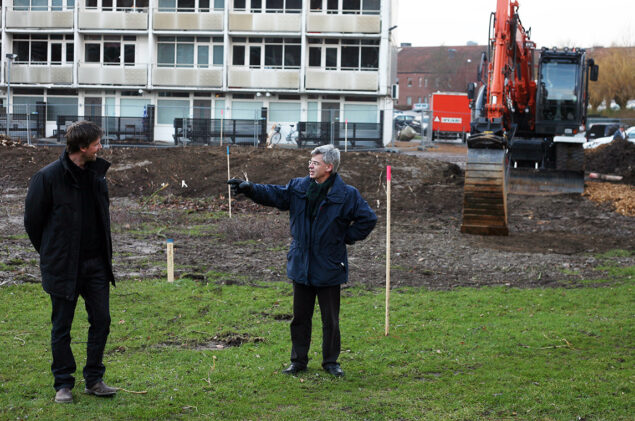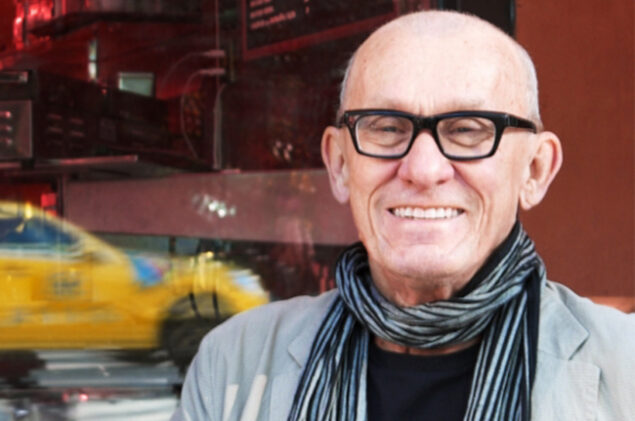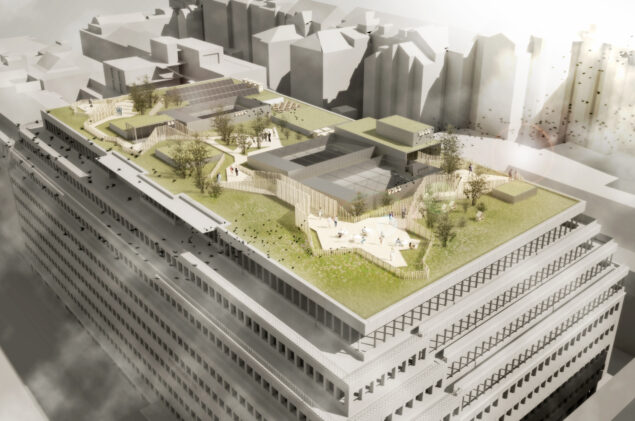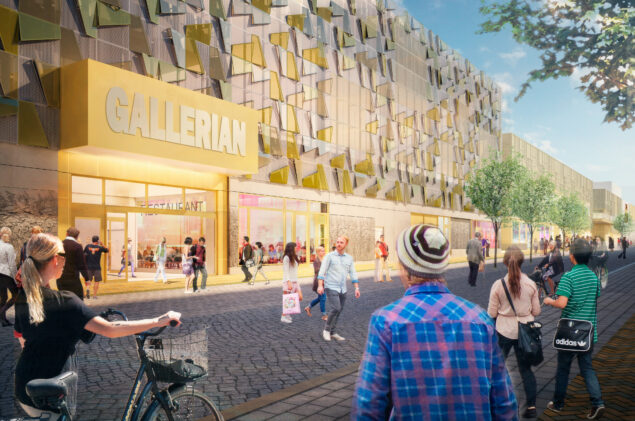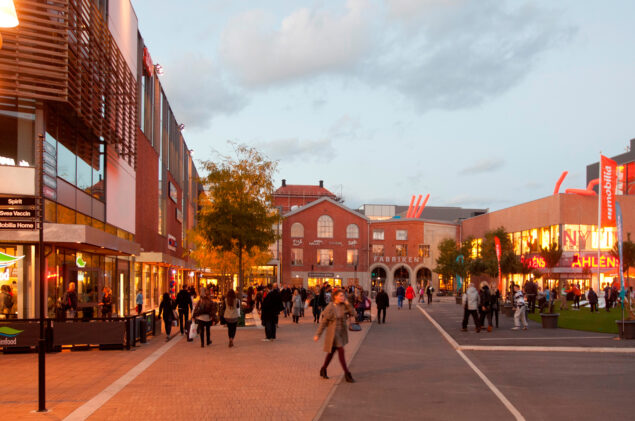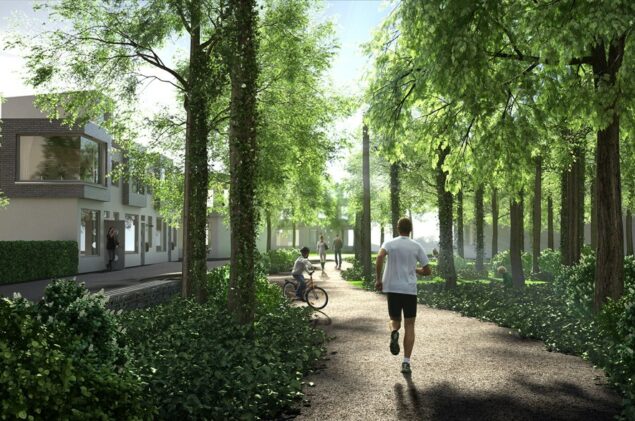2015-03-04
FOJAB arkitekter designs new sports stadiums on ancient land
FOJAB arkitekter has been commissioned to design the new arena area in Uppsala, Studenternas. With football and bandy arenas and a location right on the Fyrisån river, it will be a landmark in the city. The large football stadium will meet Allsvenskan and UEFA requirements, but will also be the public's new meeting place with open foyers and plenty of activities between matches.
- "This is a wonderful project - an open and active arena," says Per Aage Nilsson, responsible at FOJAB arkitekter. The facility is located in a green sports and recreation area. People will be able to stroll through the open foyers, take a workout, have a bite to eat or sit in the stands in the sun to watch the home team train.
FOJAB arkitekter, which has been involved in the design of Swedbank Stadium in Malmö, was invited back in 2011, as one of three offices, to a competition with the aim of investigating the entire Södra Åstråket, an area that extends along the Fyrisån river and borders the hospital area to the east. It involved stadiums for football and bandy and other public facilities, but also a development of the park space next to Uppsala Stadsträdgård. In addition, new infrastructure connecting the area to the inner city with bridges over the river. Now, a few years later, FOJAB arkitekter has won the continued assignment in fierce competition.
- 'Yes, there were a lot of people who wanted to design stadiums, so this is really fun - we didn't have an obvious ticket in,' says Per-Aage Nilsson, a specialist in this type of architecture. Arenas are complicated buildings, largely because of the flows and logistics. But they are also interesting meeting places where you manage large volumes of space, sight lines, security and sound. In terms of sports, it is also exciting, especially here in Uppsala where the football stadium is also the home team's training ground. Bandy, which is mostly associated with Studenternas, will have a new indoor arena, close to the football stadium.
In addition to the football and bandy hall, the assignment now includes the design of the surrounding park landscape, arena square, restaurant, offices, parking and other premises for sports and recreation. The football stadium will be built in stages, with the first part accommodating around 10,000 spectators, with the possibility of future expansion. The bandy arena is planned for an audience of 4,500 people. Sportfastigheter, a municipality-owned company, is the client, and the project is scheduled for completion in 2017.
2015-02-12
Rådhuskvarteret nominated for Building of the Year 2015
Building of the Year is the most prestigious competition in the built environment sector. It highlights examples of the sector's best performance in terms of quality, project collaboration, economy and design.
The award is a collaboration between Byggindustrin magazine and Svensk Byggtjänst. The winning project will be announced on March 23 at a gala event at Cirkus in Stockholm.
2014-11-28
Activity-based workplaces on everyone's lips
Activity-based workplaces (ABW) are on everyone's lips. Our working life is undergoing a structural change, creating both new opportunities and challenges. How should our premises be designed to provide the best support for work? Does the answer lie in the ability to choose a work environment according to activity?
Interior designer Lisa Mannheimer at FOJAB arkitekter has designed Skanska's new regional office Klipporna in Malmö Hyllie based on an activity-based approach. The 6,000 square meter office is characterized by beautiful natural materials, colours and furniture, and exudes quality and timelessness.
In a well-functioning workplace, there is a balance between opportunities for focused work and collaboration. Freedom of choice for the individual is important, and flexibility stimulates creativity and the exchange of ideas. 'There is no doubt that today's technological developments provide fantastic opportunities and invite new ways of working,' says Lisa Mannheimer. But it is also important when discussing ABW environments that they are adapted to the businesses and companies you work with. Ready-made, simple concepts that are just applied straight away do not work, no matter how trendy they are.
Skanska wanted a modern workplace that meets the need to meet and work together as "One Skanska". They wanted an innovative work environment, where cooperation and collaboration are seen as success factors, both internally and when meeting visitors.
Lisa Mannheimer has a long-standing partnership with Skanska. Over the years, they have invested in the purchase of good quality, classic design furniture and fittings that stand the test of time. Now they had the opportunity to use much of the company's existing furniture as a base for new additions in the same spirit.
The building, designed by Henning Larsen Architects, is characterized by load-bearing elements in solid white concrete. To tell the story of Skanska, once the Skånska Cement Foundry, concrete has also been used in the interior design, for example in the countertops. The building is environmentally certified to LEED Platinum level.
We have let the green idea permeate the interior design and worked with few, but well-chosen materials. The Scandinavian blonde tone reflects the international Skanska's Nordic origins, using materials such as light ash, wool and linen," says Lisa Mannheimer.
2014-11-27
Tomorrow's hospitals - Anna Hjort on an evolving architecture
How will tomorrow's hospitals function - what are the architectural trends? Here, Anna Hjort, the architect responsible for the Healthcare competence area at FOJAB arkitekter, explains.
A big thing that is happening now is the conversion to single-patient rooms. This means less risk of infection, less risk of medication errors and you can easily examine the patient on the spot. Overall, the patient recovers faster. The chain of positive effects is so significant that this is now being implemented in Sweden, and indeed throughout Europe. In Sweden, it is also linked to a completely new concept - Patient Closer Care - which means that staff sit out in patient rooms rather than at the end of a corridor.
What is happening is that hospital stays are getting shorter. Whereas 20 years ago you were in hospital for 15 days, now you only need to stay for 3 days on average. This is of course also related to more effective medication, medical equipment and treatment.
Resilient outpatient clinics
Another new feature is that we are designing general outpatient clinics - not specially equipped clinics for orthopaedics, medicine or surgery. All rooms should look the same, so that you can grow and shrink over time. If a department needs more space, it can swell temporarily. Equipment such as ECG machines and the like are of course specific to the operation, but they are now usually on a rolling basis and can be retrieved from centrally located stores if necessary.
This is a prerequisite for the economic viability of healthcare. Co-use is based on designing premises that are as general, flexible and resilient as possible.
At the same time, home care is also being developed, making it possible, for example, to perform dialysis yourself instead of going to the hospital every day.
Robots take the plunge
Flows of pedestrians, patients, goods and staff, which should never cross each other, exist as an underlying structure supplying the different units of the hospital.
Often there is a logistics building on the periphery of the hospital area. This is where all food, goods and laundry are transported. To ensure that there is not too much running, either within the area or within the wards, transportation is managed by a system of culverts and elevators to each floor.
In some places, such as Norway, robots are used for transportation. They can be predestined to take, for example, medicine from the medicine store in the basement. Using a magnetic loop in the floor, the robot makes its way to the right elevator, which knows which floor it is going to. The door opens, the robot drives out and parks outside the entrance to the ward. This means that there is no need to have medication rooms on the wards. Instead, there are centrally located staff who administer the medication.
Such robots are also available for laundry and food transport, for example. You save staff and you save valuable space in the wards. There's less waste because, when it's that easy, you just order what you need. But it has to be in high-volume hospitals for this to work well and pay off.
Evidence Based Design
A key concept in this context is Evidence Based Design. The hospital should not just be a high-tech device where you put a sick person in and they come out healthy. It shouldn't just be management. The hospital stay should be an experience that is good for the soul as well. The soft values are very important. I'm thinking about views, daylight, beautiful colors and good materials.
It's also about not unnecessarily exposing things that can be intimidating. The staff are used to what it looks like, but for a patient who may already be tense and scared, the environment can be terribly intimidating. It could be the operating room, which you have time to see before you are put under anesthesia, the masks you have to put on for radiation treatment, or the MRI camera, which can frighten children in particular. Manufacturers are very aware of this and try to make medical devices as patient-friendly as possible. In short, it is important that the physical environment is a beautiful and friendly experience.
2014-11-26
Karin Fagerberg new Chairman of the Board of Sustainable Business Hub Scandinavia
Karin Fagerberg works as CCO and commissioned architect with a focus on urban planning at FOJAB arkitekter. Since a few months back, Karin is also the new chairman of the board of the environmental technology network Sustainable Business Hub Scandinavia.
The network's vision is for southern Sweden to develop into a world-leading region in cleantech by 2020. The mission is to promote increased competitiveness and exports among the region's cleantech companies.
In order to develop their business both in Sweden and on the export market, they work in cluster form with various projects, one of which is SUD, Sustainable Urban Development, in which FOJAB arkitekter actively participates. SUD works to gather excellence in sustainable urban development.
'With support from the Delegation for Sustainable Cities, the SUD cluster has participated in international urban development contexts, most recently in Poland and Russia,' says Karin Fagerberg. 'At the regional level, we organize so-called leading edge seminars for Skåne's municipalities in collaboration with Region Skåne. In my role as chairman of the board, I come into contact with additional areas of expertise and industries in cleantech, while at the same time I get a chance to support the part of the business community that wants to be at the forefront of sustainable solutions.
2014-11-21
FOJAB architects in giant urban transformation project
FOJAB arkitekter has been selected as architects for the Centralen area in Gothenburg. The assignment also includes a design program for Nils Ericsonplatsen, Kanalgatan and Kanaltorget. The project, which is part of the larger Vision Älvstaden, will be characterized by openness and meetings - with the water, between old and new, city life and the surrounding countryside.
- "This is a gigantic urban transformation that is beginning in the center of Gothenburg," says landscape architect Magdalena Hedman, responsible for the project at FOJAB arkitekter. It is about transforming central areas that are currently characterized by large-scale traffic solutions into places for attractive urban life. We already have a framework agreement with the City of Gothenburg for planning architect services. Now we have been selected as design architects with coordination responsibility for the urban development program for the entire Centralen area.
The urban development program was produced by the City of Gothenburg in May 2014. It has gradually resulted in a plan structure that allows for 500,000 square meters of businesses and 2,000 new homes. Major infrastructure projects worth SEK 30-40 billion will be implemented over the next 15-20 years and will have a positive impact on the Central Area. The most important of these is the West Link, which will lead train traffic in a tunnel from Gothenburg Central Station, which is currently a bag station, to the other side of the city.
This also means that the car traffic that currently passes Göteborgs C will be diverted and cross the tracks at the back via the new Bangårdsviaduct. This leaves the field free to create new attractive urban spaces for people and public transport on the front side, towards Nils Ericsonplatsen and Drottningtorget.
- FOJAB arkitekter received the assignment in October and the work will continue until January 2016 with the possibility of an extension, says Magdalena Hedman. "We got it in competition, where it was seen that we have the potential to take on the task with higher expertise and quality than other bidders. Fortunately, this is a forward-looking procurement where quality was ranked higher than price.
- The project is about planning at different scales and design in a complex metropolitan context, and we have been able to show several good reference projects. It will create conditions for mixed functions in a fine-meshed urban structure with pedestrians and cyclists at the center. Good urban life in high quality urban spaces and access to greenery and water is what we will focus on," says Magdalena Hedman.
2014-09-02
FOJAB arkitekter opens another office
FOJAB arkitekter is now also present in Helsingborg. The new office is located on Drottninggatan in the city center.
"We have discussed the possibility of establishing ourselves in the Helsingborg region several times over the years. We feel that, despite its proximity to Malmö, it is a separate market with great potential," says Cecilia Pering, CEO of FOJAB arkitekter. "Therefore, we are very pleased that this is now a reality with a group of experienced and qualified new employees.
The work in the Helsingborg office is led by architect Staffan Premmert. Staffan comes from Sweco Architects.
He and his colleagues have a solid and broad experience in several sectors.
"Right from the start, we have exciting new assignments in housing, offices and retail," says Staffan Premmert, "and we expect to expand in the coming years. Our local knowledge and customer contacts, combined with FOJAB arkitekter's specialist resources and broad expertise, provide a strong offering to the market.
2014-08-22
Mobilia awarded the Malmö Stadsbyggnadspris prize
Mobilia, Malmö's oldest shopping center, is now being developed to include 66,000 square meters of retail, services and housing - in effect a new district with its very own identity. The site's industrial history is also evident in the architecture, where new and old interact. In the past century, more than 3000 people, mainly women, worked here under the saw-toothed roofs in Malmö's flourishing textile industry.
- It is the holistic approach to the transformation of Mobilia that the Urban Design Award Committee is rewarding. They have carefully preserved the older buildings and added new buildings with sensitivity to the site. The area has been given new functions and new content, without losing the area's industrial historical significance," says Carina Svensson, chair of the Malmö City Planning Board and of the Committee for the Urban Development Award.
- Mobilia's transformation is a good example of densification and a mixed city and shows how the surrounding neighborhood could be developed. New businesses and housing have been added, new paths and meeting places have been created, and the land has been used resource-efficiently within the city," says Christer Larsson, Director of Urban Development in Malmö.
2014-06-26
Planning tool receives research funding
FOJAB arkitekter has been awarded a grant of SEK 100,000 by the Arkus Foundation to develop a tool for climate-smart planning. The aim is to measure, at an early stage of planning, how climate-smart a project will be. By relating it to nine quality criteria, the tool provides figures on the project's climate footprint in terms of tons of carbon dioxide per capita.
A basic model of the tool is described in the publication Planera klimatsmart! which a project group at FOJAB, led by Magdalena Hedman, produced in the spring.
- 'We looked at current international research to see what factors and relationships affect carbon dioxide emissions,' says Magdalena Hedman. 'Then we asked ourselves the question: How can we meet this challenge in our physical planning? And how do we make the knowledge available and measurable at an early stage of planning?
The criteria against which the project will be measured fall into three main groups:
- Localization - where in the world is it located?
- Structure - how does it relate to the outside world
- Transport - how to get to and from there?
It will now be possible to develop and deepen the tool - the intention is to make it more user-friendly and goal-oriented. It is primarily intended to be used by planners in the municipalities in their strategic work. One of the questions asked by the project group is whether the calculation model should relate to an ideal case or be adaptable to the individual municipality's own conditions.
- 'Through our assignments, we have a pretty good idea of the concrete issues that municipalities are grappling with,' says Magdalena Hedman. Arkus supports practice-based research - it goes hand in hand with how we want to work. The whole point of this is to produce a tool that is accessible and relevant. In this way, we make it easier for our colleagues and partners to achieve the set sustainability goals.
The development work is expected to be completed by the end of 2015. The intention is also to have the practical tool available for use.
The Arkus Foundation is a forum for research and development in architecture and spatial planning, whose mission is to initiate, plan and finance practice-oriented research and development projects. We work for and with the Arkus members association, which consists of the country's leading architectural firms.
2014-06-19
FOJAB architecture salon
FOJAB Arkitekter Stockholm is now launching a series of architectural salons, which will take place every quarter.
What is the architectural salon?
It's the soiree, the pub, the club, the meeting, the conversation, the hangout and the new friends!
Pretty serious, but fun. The meeting where we see things from different angles, without positioning ourselves.
Remove the cardboard figures!
Why do we have the Architecture Salon?
Together with our clients, colleagues and other random people, we can focus on what we actually do.
Acting through architecture!
In the daily grind, you drown in the process. The architecture salon is a place to see and enjoy what is important and fun. Lift your head and see the subject and the essence! To meet informally, learn things, drop in on the way home, have fun.
What should your architecture do?
It's up to you!
How does the salon work?
The salon is run informally at our Stockholm office. We invite interesting people to talk about something they are passionate about and which is loosely linked to a topic for the evening. The salon is a platform for a wider debate on architecture and everything related to it. We mix 1/3 architects, 1/3 builders and clients and 1/3 loose people; artists, writers, jokers and students.
We run 2-3 short talks, we offer some snacks, a beer and a sandwich in hand.
Hang out for a while and meet some new friends.
"In Europe, and to some extent its colonies, especially in the 17th and 18th centuries, a select group of the city's upper class would gather to 'hold a salon', that is, talk about literary events or whatever, at someone's home. In general, most countries had a very limited freedom of expression from the outset. Saying the wrong thing in a public place could result in the death penalty. Instead, private gatherings were organized in homes, which became a kind of political or artistic sanctuary [- - - -] Over time, this was not limited to upper-class participants; it was also an opportunity for artists to showcase themselves and connect with potential funders, and for intellectuals to debate current political topics.
The salons continued into the 20th century, but they lost their cultural significance in the 19th century as political and artistic freedom increased."
Extract from Swedish Wikipedia
2014-06-17
City of Stockholm chooses FOJAB architects
FOJAB arkitekter has been selected by the City of Stockholm to develop an urban development concept for the Hjorthagen waterfront in Stockholm Royal Seaport. As one of three architectural offices in a parallel assignment, they will work on the design of one of northern Europe's hottest urban development projects. The procurement also includes a framework agreement for the design of urban structure and public environments in Stockholm Royal Seaport. SEK 2 billion will be invested in sustainable and climate-smart construction in locations that will have Stockholm's highest real estate prices.
Magdalena Hedman is responsible for the project at FOJAB arkitekter:
- This is a dream project in the context of urban development, with explicitly high ambitions from the City of Stockholm. The most sustainable and climate-smart district in Sweden will be built, and we can contribute our expertise. I am really looking forward to this work. Not least because we identify a strong affinity in values with our client, which guarantees a good result.
Stockholm Royal Seaport is one of the largest urban development areas in Stockholm and northern Europe where extensive buildings and facilities are planned to be built over the next 20 years. The area will, in a sustainable and resource-efficient way, accommodate about 35,000 workplaces and about 12,000 new homes with associated services and infrastructure. Half of them will be located in Hjorthagen.
The current phase, Kolkajen-Tjärkajen-Ropsten, is located between Hjorthagsberget and Lilla Värtan, next to the bridge to Lidingö. At present, it is industrial land and a port, which has been used for energy production. The area contains the culturally and historically valuable Vattengasverket, which will be preserved, as well as the Tar Factory and the old Kolkajen. To the southwest is the Ropsten metro station.
The parallel assignments will investigate and show how Hjorthagen's future entrance and waterfront can be designed with a focus on the public urban spaces and parks. The starting point is both overall objectives regarding transport, energy, cycles, buildings, greenery, lifestyles and activities, as well as the specific character and conditions of the site.
- At FOJAB arkitekter, we work in an integrated way with buildings and landscapes in urban development, which provides good conditions for creating attractive urban spaces and places, says Magdalena Hedman. The goal is a dense and mixed neighborhood with a strong identity and high quality urban design. "Not everyone will be able to afford to live here, but everyone will be able to spend time here and enjoy the social life and proximity to the water. We are working towards a permissive city that is there for people and that invites different types of activities.
Work on the parallel assignment will continue until September. After that, an in-depth proposal will be developed, which will form the basis for the upcoming planning work. FOJAB arkitekter has also been awarded a framework agreement with the City Planning Office in the City of Stockholm for the work on Norra Djurgårdstaden, until May 2019.
2014-06-04
Model Manager, a new role in the architectural office
Good coordination is essential for the success of a 3D project. A BIM model contains all the information about the entire building, and the drawings are generated directly from the model. This means that all those involved, consultants and architects alike, need to have a common working methodology, which creates order.
At FOJAB arkitekter we have been working purposefully on this for several years. We have developed method sheets, prepared template files and built a library of good objects that can be used in many projects. Over time, a new area of responsibility has emerged within the project teams - keeping the model in order. The people who take this on are called Model Managers and they play a central role. Their work provides good conditions for other participants to produce the necessary documents quickly and safely.
Key tasks are to
- Raising the model from the early foundations that exist
- Setting up views for different types of work and reviews
- Setting up views for exporting information to other consultants
- Receiving and linking in documentation from other consultants and keeping it updated.
- Create drawings and drawing views
- Fixing errors and warnings in the model
Mårten Fridberg, CAD manager at FOJAB arkitekter, has trained more than 15 engineers and architects over the past year. Several of them now work in our assignments as Model Managers, which improves quality and saves time.
2014-06-03
Unique investment in new station community on the main line
Three municipalities, Bollebygd, Härryda and Mark, are joining forces in a unique, unified effort in connection with the construction of the new main line between Borås and Gothenburg. Together with FOJAB architects, they have drawn up a development plan based on a new joint train station, half an hour from the center of Gothenburg. Here, the climate-smart lifestyle of the future will take shape in a region that invests in sustainable growth and infrastructure.
What would a new train station on the new main line between Borås and Gothenburg mean? Plenty, if you ask the municipalities of Bollebygd, Härryda and Mark. Together with FOJAB architects, the three municipalities have developed a joint development plan for what a station community would mean in terms of investments in housing, infrastructure, trade and municipal services. At a joint council meeting on June 3, the plan was presented for the first time to all three municipalities' council members.
- We are taking a joint approach to the development of the entire area affected by a new future train station between Bollebygd and Rävlanda, which can contribute to regional development. In this way, we show that we are united for future discussions with the Swedish Transport Administration," says Christer Johansson (m), chairman of the municipal board in Bollebygd.
The development plan is based on the three municipalities' existing qualities and growth in a 25-year perspective. A new station location between Bollebygd and Rävlanda will enable a population increase of around 8-10,000 inhabitants and eventually link the two towns together. There will be a wide range of housing, commerce and municipal services in strategic locations and proximity to nature and recreation. For this to be possible, major investments in climate-smart infrastructure are required in the area. It should be easy to drop off at school and kindergarten, take the train to work and shop on the way home. It should also be easy to change modes of transport from bus or car to train, or to get to and from the station by bike or on foot. This requires investment in commuter parking lots, roads and pedestrian and cycle paths. The focus is on creating the conditions for a functioning and sustainable everyday life.
- Good communication in an area is a factor that attracts residents and strengthens growth. The new commuter train station will be the center of the area, and with better roads to communities such as Hyssna, Hällingsjö and Hindås, it will be an important hub for the entire development area," says Annette Eiserman-Wikström (m), chair of the municipal council in Härryda.
Today, 80 percent of the residents in the area choose to travel by car due to a lack of attractive travel options. One of the key issues is to create good connections for cars, buses and bicycles, to and from the station area. A new road is proposed from Rävlanda and from the centre of Bollebygd both a new car road and a pedestrian and bicycle path are proposed, to connect both towns with the new station area.
2014-04-09
BMC Seminar Room 1345 rises above the noise of everyday life
The Biomedical Center BMC in Lund has received an exclusive addition. On the roof of the old animal house, a building has landed that sparkles like water when the sun shines on it. It houses meeting and seminar rooms for researchers and teachers. The idea is to exchange thoughts and ideas in a relaxed lounge environment, above the noise of everyday life.
The Biomedical Center (BMC) is a prominent research facility attached to the Faculty of Medicine at Lund University. Ten years ago they built a modern new building with laboratories. A few years ago, it was time again. Mats Österberg of FOJAB arkitekter was commissioned to design a conversion of Klas Anshelm's old Immunolog from the 1960s into a student center for medicine.
The reception and entrance for visitors and students faces Sölvegatan while the seminar rooms are located deep in the buildings. The need to supplement with more centrally located meeting rooms has therefore emerged. At the same time, the popular terrace on the roof of the animal house was looked at with interest.
This led to BMC's latest addition, also designed by FOJAB architects: a new small house that elegantly balances on the edge of the animal house. Inside, it has the character of a single open room, but with compartmentalized functions. Fixed furniture and cabinets act as room dividers, with frameless glass connecting to the wall and ceiling. The impression is of a sophisticated academic environment but with a relaxed atmosphere. There is a fireplace, comfortable armchairs and a sunny terrace. The warm wooden interior is exposed to the BMC courtyard through large window openings.
- "The business wanted the building to shine like a lantern," says architect Anna Belfrage of FOJAB. The first idea was to integrate LED lighting into the facade. This idea failed because of the price. Instead, we chose a solution with structural glass and a galvanized, slightly shimmering sheet metal behind it. The result is a facade that gives the impression of water glitter when the sun shines on it.
Anna Belfrage, who has a background in Madrid working on elegant interiors, appreciates the high level of finish achieved on the interior carpentry. But the ambition to create a sense of a single space also presented some challenges.
- Controlling the sound between the different rooms was a journey. It ended with 5 cm thick specially designed sound cassettes that provided 45 dB attenuation between the meeting and seminar rooms. "It has become a wonderful environment where the choice of materials, sound and light contribute to an extraordinary quality," says Anna Belfrage.
2014-04-03
"We can't afford to guess on the premises issue"
Many municipalities have used the Strategic Premises Planning method, especially for planning educational premises. So what does the customer think? The question goes to Stefan Norrestam, Director of Education in Lund Municipality.
- I have used Strategic Local Planning both in Helsingborg and most recently in Lund. I would say that the method is a prerequisite for being able to plan at all. We get a good, common overall picture of what our use of premises looks like. This then forms the basis for concrete decisions on new establishments, renovations and relocations.
In Lund, FOJAB arkitekter has helped to investigate all upper secondary schools, the Culture School and Komvux. Stefan Norrestam says that Lund has a very high occupancy rate.
- We cannot afford to guess on the issue of premises. In the past, it has been dealt with locally, even at the scheduling level. But it is difficult for the scheduler to see the big picture, and this can lead to the use of less suitable premises just to accommodate daily activities. The search for new teacher workspaces can mean taking up classrooms or tolling common areas until it is no longer possible. With this method, we look at the bigger picture and get an overall view of the actual needs. We see the potential for connection and co-use. This is very valuable and saves time and money.
Stefan Norrestam explains that the different school units are like communicating vessels because they have similar programs in different places. It is therefore important that both politicians and managers get a common overall picture. Only then can you proceed with a local program, but you should not start there.
- It is not just a school. It is a workplace for perhaps 1200 people. And the issue of space use is not just a school management issue. The buildings are a tool to turn goals and visions into reality.
The new curriculum for upper secondary school, GY11, which came into force in the 2011/12 academic year, reforms the school with new requirements and objectives, says Stefan Norrestam. Strategic Local Planning will be a means to meet that mission.
- The method drives the question of how we want to work, for example with core subjects and character subjects together. Today, we mainly have separate premises for math and construction. Now we are planning for these subjects in the same spaces and have the overview that makes this possible. An important prerequisite is that the analysis is developed in collaboration with the business. This shifts the focus from finding rooms to be in to looking at how we would like to work, now and in the future. It is not just about premises but about operations and development - about how we can fulfill our mission.
2014-03-25
Town Hall Skåne inaugurated
On March 21, there was a moving-in ceremony in the new Rådhus Skåne in Kristianstad. To music and inaugural speeches, 700 employees and elected officials took up their new workplace. In a new building behind largely preserved older facades, Region Skåne and Kristianstad Municipality now meet on a daily basis.
The architect behind the project, Greger Dahlström of FOJAB arkitekter, was one of the opening speakers:
- The objective of the program, as presented, was: "an open and accessible meeting and workplace that stimulates renewal and opens up for engaging meetings for citizens and colleagues". Our translation of this into an architectural vision could be formulated as: A modern, efficient and flexible building, which externally and internally exudes openness, transparency and timelessness.
Behind the decision to locate Rådhus Skåne in the center of Kristianstad and immediately adjacent to the railway station is a desire to be close to the citizens. This attitude is also expressed in various ways in the architecture.
- The new entrance towards Stora Torg wants to be the opposite of the monumental entrance - an undramatic meeting with the visitor. The large civic window signals welcoming openness and transparency," says Greger Dahlström.
Once inside, visitors are pleasantly surprised. The block's classic, rather closed facades enclose a completely new modern office that is flooded with light.
- Just as important as daylight is the possibility of views, which allows you to feel the rhythm of the day and follow the changes in the weather. The open office and glass walls provide lines of sight both horizontally and vertically through the building to the surroundings," says Greger Dahlström.
2014-03-13
FOJAB project wins international real estate award
In March 2014, MAX IV in Lund won the Best Futura Project category at the international real estate fair MIPIM. FOJAB arkitekter was present in Cannes to receive the prestigious award. There were also representatives from Lund Municipality, Lund University and the developer Fastighets AB ML4.
- We are very proud and happy that the project has received this award, says Daniel Nord, CEO of FOJAB. Not least because the category was Future Projects. MAX IV houses cutting-edge technology and will be a workplace for researchers from all over the world.
In the facility, electrons are accelerated to near the speed of light. When their orbit is broken, radiation, called synchrotron light, is released, which is used to investigate material properties at the molecular level. The process requires precision and places great demands on the structure. Above ground, the building appears as a large, unbroken ring of smooth matt-brushed metal with a bridged, shimmering white office volume. This, in combination with the green roofs and the rolling landscape, will be a hallmark of MAX IV.
- It is important for us that the building has a strong architectural expression and a clear anchorage on the site, says Daniel Nord. "It is therefore particularly pleasing that we have succeeded in communicating the building's qualities to an international audience of experts in a tough competition.
The journey began with a parallel assignment in 2010, where FOJAB was commissioned to continue working on the design of the building together with Snøhetta, which was given responsibility for designing the landscape. This was followed by the design of construction documents for a building with unusually high technical requirements. With a total area of 50,000 square meters, the buildings are expected to be ready for use in 2015.
MAX IV - A design challenge (Youtube)
MAX IV - Environmental perspective (Youtube)
MAX IV - Staff perspective (Youtube)
2014-02-10
FOJAB staff win international awards
The competition entry "In-Between Landscapes" has been awarded a prize in the international architectural competition Europan 12. Behind the proposal are Marco Pusterla and Edvin Bylander, both employees of FOJAB arkitekter. The team also included architecture students Madeleine Heckler, René Andersson and Emelie Dafgård.
The entry was awarded a shared 2nd prize, which in the context of Europan is referred to as 'Runner-up'. It was one of some 50 proposals submitted to the Kalmar competition area, where the task was to design a new district on the coast, south of the city.
Europan is the largest recurring architectural competition in the world. Architects under the age of 40 from all over Europe participate and the competition is held every two years, now for the 12th time. Participants could choose from 51 competition areas - sites - in 16 countries, including five in Sweden.
- When we decided to participate in the competition, we went through the different sites carefully to see which one we found most interesting. We settled on the one in Kalmar because we thought the potential and challenges were particularly high. The area is located between the current E22 and consists of wetlands that are often flooded. We wanted to highlight the qualities of this special place," says team leader Marco Pusterla.
Kalmar is growing southwards and the task was to design a new district for about 3000 inhabitants. A starting point was the municipality's principle decision that all neighborhoods should be integrated with different types of housing and services.
The team's answer to this is a neighborhood with an urban character and a strong relationship with nature. The wetland located between the residential areas and the current waterfront could easily become a border separating the city from the sea. The proposal instead makes it accessible and clear. The special nature becomes a zone that can be temporarily occupied by different arrangements for art, culture, recreation and outdoor life.
- 'We meet nature through culture,' says Edvin Bylander, Marco's competition partner. 'By adding various simple built elements such as footbridges, platforms and pavilions, we make the changeability of the site visible. In a hundred years, the sea level will have risen to another level. Then the housing we have added will be right next to a quayside, and this zone will be just a memory.
This is not the first time FOJAB employees have been rewarded in the Europan context. Four years ago, Marco Pusterla won first prize in Europan 10 in Lerum together with Jesus Mateo. In Europan 11, Anders Eriksson in a team with architecture students Egil Blom, Hannes Haak and Daniel Lindberg shared first prize in Simrishamn. The project in Lerum has, so far, led to a quality program developed by Lerum municipality together with FOJAB architects.
- Europan is a great opportunity to challenge yourself and your creativity. The competition is based on a concrete project, but it also contributes to the debate on architecture at an international level. It is very interesting to look back at past European competitions. Much of what we see in today's architecture is reminiscent of the competition proposals of 10-15 years ago," says Marco Pusterla.
2014-01-23
MAX IV in final of MIPIM Awards
Since 1991, the international real estate fair MIPIM has presented the MIPIM Awards to innovative real estate projects around the world. On January 20, it was announced that the MAX IV synchrotron light facility, as one of four projects, has made it to the final round in the "Best Futura Project" category.
In total, 28 projects in 7 categories have been selected by a jury of international real estate agents. The winners will then be chosen by visitors and the international jury and announced during the annual MIPIM real estate fair in Cannes on March 11-14.
In 2010, FOJAB arkitekter was chosen to design and plan MAX IV for Lund University with Fastighets AB ML4 as the developer. Snøhetta arkitekter was chosen as landscape architect. The project has strived for a symbiotic relationship between landscape, external building form and internal form.
The large experimental hall's roof lantern with its brushed aluminum surface, the office building's white metal cassettes and horizontal window shades, the white concrete facades of the other buildings and the rolling landscape will make the MAX IV laboratory a distinctive landmark at Lund's northern entrance.
MAX IV will become operational in mid-2015.
2014-01-09
Groundbreaking for Helsingkrona
This is the groundbreaking ceremony for Helsingkrona Nation's new student accommodation.
Architect Mattias Hedberg Ek, FOJAB arkitekter, and Peter Runnerström, Proinspektor Helsingkrona, also chairman of the House Board, mark the historic milestone. Photo: Helsingkrona nation.
2013-11-13
Five questions for Robert Lavelid
Five quick questions for architect Robert Lavelid, new office manager at FOJAB Stockholm.
How would you describe yourself?
I am a passionate professional - an architect who is passionate about my profession. In this role, I particularly enjoy driving processes towards goals. Then, as a person, I am curious and ready for change - I hope...
Is there a building that makes your heart beat faster?
The buildings I have designed myself have a special place, of course. Right now they are the most recent ones, called Khimki, which are two large office buildings in Moscow.
One building I got to visit as a young student is Frank Lloyd Wright's famous Taliesin West School of Architecture. It is located in the small village of Scottsdale outside Phoenix, Arizona. The school and his winter home relate in a very special way to the surrounding desert and made a big impression on me.
I also find Le Corbusier's residential building in Marseille, Unité d´Habitation, very interesting.
What are your sources of inspiration?
One person I have followed all my life is Ulf Lundell - he is six months older than me. Especially as a writer but also as a musician he has influenced me a lot.
In architecture, there is a whole range of architects who inspire me. Le Corbusier of course. As a pure designer above all, not as a social builder. The Peruvian architect Henri Ciriani, based in Paris, is another source of inspiration.
Then all my life I have been a friend of Denmark. I have lived in Denmark, and Danish architects and architecture in general have influenced me a lot. One example from the older school is Arne Jacobsen.
One Danish modern architect I find interesting is Bjarke Ingels. He has managed to bring architecture out of the closet and make it accessible to a wider audience. He has a good way of presenting and explaining his projects. This is not to say that I think everything he draws is good.
The Danish architectural firm Vandkunsten has also been a great source of inspiration for me. Through social commitment, they have created great architecture with little money.
The FOJAB Stockholm - Malmö link, what can it bring?
In recent conversations I have had, a curiosity about FOJAB as a new, professional player on the Stockholm market has emerged. You may know the company by name but don't know much more. Stockholm is a different market with a slightly different approach. In Malmö there is more of the Danish view of architecture, and there is an interesting cultural connection that feels exciting to explore.
What are you doing right now?
I am sitting at Arlanda airport, in the gate of the Moscow flight, on my way to present an office project. It is an elaboration of a proposal for two office buildings to be located near a huge shopping mall - one of the largest in Europe - that is being built in the center of Moscow. The project is actually at a conceptual stage, but in Russia this means that decisions can suddenly be made very quickly. It's a completely different pace in Moscow, a strong drive that we are not used to in Sweden. But now I have to finish and get on board. We'll be in touch!
2013-10-28
3000 sqm of untouched mountain nature in central Stockholm - where is it possible?
On Sveavägen 44 - as central as it gets. Behind the answer is a unique project. Landscape architect Johan Paju of FOJAB Stockholm is responsible for both the project and the explanation.
On Sveavägen 44 is an entire block that was originally Skandia's old headquarters, built in the early 1940s. The facade is protected and looks the same now as it did then. The interior of the block, which used to be a collection of many different buildings, has now been rebuilt except for two small atrium courtyards. In total, 65,000 square meters of offices, shops, hotels and housing have been rebuilt. The roof has basically become one large, continuous, flat surface with small holes.
Windy and exposed
The entire neighborhood will be Breeam certified and the project budget was based on a sedum roof solution. When Johan Paju got the assignment, the idea was to match the budget set, but still create added value.
- Sedum is quite boring, and it is not walkable. I thought: We do the opposite - we seed in a substrate, a shallow soil, and make a real landscape that is not a finished product. Up on a roof, it looks like a mountain, basically. It's windy and exposed, and almost no plants survive. So we chose plants and plant types from just such situations - mountain vegetation and outer archipelago vegetation. This will be the first wild park in Stockholm. And it will be completely untouched. We will only mow it once a year.
Like a big archipelago bridge
Three undisturbed habitat types are created: flourishing dry meadow, scrub forest - which is a marshy scrub forest common in the outer archipelago - and shingle fields with almost only stones and mosses. This is the foundation. Floating above this, a wooden deck will be built as a promenade with seating, about 500 square meters in size. It will be raised from the ground about 35 cm, so that you can sit comfortably on the edge.
- "It will be like a large archipelago bridge that you walk on, with a balustrade that reduces the wind speed and creates views," says Johan. The balustrade is shaped according to the roof landscape. You walk on the deck and only in certain places can you get out into nature. There is no effect lighting at all, only spill light from the surrounding city. You can stand there, above the city's rooftops in 3000 square meters of real nature. In the center of Stockholm.
Nature in Manhattan
Johan explains that there are some projects in New York City that are somewhat similar. One of them, Time Landscape by Alan Sonfist, is a piece of land in Manhattan that has been planted with native plant material. Because the conditions are the same, a forest is slowly emerging that tells the story of what nature was like in Manhattan in the 17th century.
The roof garden will be completed in spring 2014 and will initially be available to office tenants during the day. It is hoped to eventually open to the public at certain times.
2013-10-25
BRIO - one of Sweden's most stylish offices
Toy manufacturer BRIO's new office in Malmö, with architecture and interior design by FOJAB arkitekter, is competing for the title of "Sweden's most beautiful office" in an ongoing competition organized by Lokalnytt. Architect Anna Belfrage talks about the project.
- The raw attic at Malmö Central has been transformed into BRIO's new headquarters. Property owner Jernhusen had prepared the adaptation by restoring stairwells, re-roofing, reinforcing floors and preparing installations.
- We drew on the special character of the attic, with its brick arches and mighty wooden structures, and worked on specially designed interiors. Every nook and cranny was used to make room. This has led to both unexpected and exciting solutions, I think. Of course, there were also a lot of installations to take into account. Some are hidden but others have been integrated into the design in a fully visible way.
- The color scheme was also important. We laid a black and white, stark base and then added colorful display spaces for BRIO's classic toys. Playful foils were developed together with BRIO's own project team and Ideas AB. It has become an office that conveys the brand's identity to visitors and employees in a fun way, says Anna Belfrage.
This is what BRIO itself says about its new environment in the competition motivation:
"BRIO's strong identity has been carefully incorporated into the premises and details. Impossible angles have been playfully given new functions - there are now showrooms in every room and they can all be played with for real! With us, the journey starts right outside the door and continues by inviting visitors to take off their outerwear in our enlarged product: the subway set. Here there is room to create the new play of the future."
2013-10-23
Galleria Boulevard opens its doors
Friday, October 25 is the day. Galleria Boulevard in Kristianstad will open the first stage of three. FOJAB arkitekter, through Charlotte Kristensson, is behind the project. When it is completed in the fall of 2014, it will house 70 shops and eateries - a major addition to Kristianstad's central shopping area. As the name suggests, the mall has a central location in the city center, with one long side facing Östra Boulevarden and the other facing the canal.
In 2011, Steen & Ström bought the properties in a block that formed a dreary barrier between the eastern and western parts of the city. There was the obligatory Domushuset, a travel center and parking lots. Now, a building totaling 86 000 square meters is rising as a welcoming new front to the east. It will be the backdrop for a canal-side park with greenery and outdoor seating. On the other side, Östra Boulevarden is being rebuilt, reduced from 26 to 18 meters in width and becoming a more distinctive shopping street.
The shops on the ground floor have windows facing the boulevard and interact with the shops opposite. The façade above has been covered with a thin layer of perforated sheet metal and decorated with glass prisms. Placed in a pattern of varying angles, the prisms reflect sunlight and the colors of the surroundings down to street level.
- The large scale has clearly been a challenge to manage. Throughout the process, we have focused on creating a modern and beautiful building that is also in dialogue with the surrounding Renaissance town," says Charlotte Kristensson. "We have paid great attention to the details, and worked with a subtle color scheme, not least by allowing the character of the natural materials to take place. I see Galleria Boulevard as a proud new ring in Kristianstad's cityscape.
Even in the city center, shoppers need to park their cars. Since much of Kristianstad is below sea level, it was not possible to build an underground parking garage. Therefore, the parking for the 1100 cars has been placed on the upper floors of the building.
The first phase, which is now being inaugurated, has room for more than 15 new stores. When the facility is fully developed, visitors will experience a daylight-lit indoor square that extends over two floors. A given place for Kristianstad residents to meet and mingle.
2013-10-16
Breakfast seminar on RUDA in Stockholm
FOJAB arkitekter and Tyréns AB offer a new, efficient way to work with room-related information in the design process.
While enjoying a fresh breakfast, we present RUDA, a web-based tool for creating room function programs, room descriptions or interior design lists. You will learn about functions, possibilities and also applications in a current reference project. The seminar is aimed at architects, interior designers, developers, project managers and all others who work with RFP and room cards. If you work in a BIM environment, there are direct links to Revit®.
Welcome to Architects Sweden on Thursday 7 November!
Breakfast is served from 8.00
The seminar runs from 8.30 to 9.30
Address: Storgatan 41, Stockholm
Registration is no later than 31 October to nina.pikulik@tyrens.se
Read more about RUDA basic (free) and RUDA pro at http://www.rudawebb.se.
2013-10-07
Mobilia - from shopping area to city district
Mobilia, one of Malmö's oldest shopping centers, has been transformed into an exciting new neighborhood. Heavy brick buildings from the turn of the century, once built for the textile industry, have been washed out from under layers of corrugated iron and now contrast with new buildings in steel, glass, brick and wood. What a few years ago was two single-story buildings surrounded by large parking lots is now a vibrant neighborhood with a variety of businesses. There are shops, restaurants, services, cultural and association premises, and in the middle of it all, two high-rise residential buildings with views of the entire Öresund. FOJAB + JAIS architects were responsible for the redevelopment and extension of Mobilia, and the transformation from a shopping center to a city quarter. The final stage of this redevelopment was inaugurated with a big party on September 26.
Women's workplace
The oldest parts of Mobilia have been in operation for over 100 years. Originally the area was used for the textile industry and the Manufakturaktiebolaget in Malmö. The new factories had large weaving halls under the broken sawtooth roofs, where more than 3000 people, mainly women, worked. In 1968, the buildings were converted into Malmö's first shopping center Mobilia, which today is the best-selling shopping center in the Nordic countries after NK.
When designing the new Mobilia, it has been important to preserve traces of the area's history. Collage has been a key word during the work. The facades have been designed as material compositions that link the present with history. Among other things, there is a variation of different red brick joints with almost textile qualities in the expression. The interplay between the newly built parts and the preserved buildings gives the project its unique identity:
- By mixing modern materials and expressions with traces of the area's history, we have managed to create a very special atmosphere, which really distinguishes Mobilia from other shopping centers and districts in Malmö, says Mats White, responsible architect at JAIS arkitekter.
Graphic betongue
Photographs have been used in various ways to convey the history of the building. On the facade of the parking garage, an old photo of cotton handling at the Manufakturaktiebolaget has been rasterized onto perforated sheet metal. Many of the interiors get their character from the photo enlargements that cover several of the walls. Perhaps the most special feature is the female figures in graphic concrete, which are placed under the new screen ceilings as if they were caryatids.
- Early on, we made contact with a company in Finland, Graphic Concrete, which, by translating photographs into molding patterns, could transfer the images to concrete. When I was thinking about suitable motifs, I was reminded of one of Malmö's female models, who is a good friend of my family. The cards were full of life and with beautiful clothes from the 50s. No motifs could fit better in an old textile factory than these," says Per-Aage Nilsson, lead architect at FOJAB arkitekter.
A proven concept
JAIS Arkitekter was contracted in 2007 by the developer Atrium Ljungberg as a result of a parallel architectural assignment. The purpose of the assignment was to show future expansion opportunities for Mobilia, and to provide design proposals. JAI's winning plan proposal is based on building on the existing stone city and integrating the shopping center into the urban fabric. This will make the area a vital and accessible part of the city.
- "Now that it has been inaugurated, it feels like the original ambition has been fulfilled in a good way," says Per Aage Nilsson and is supported by Mats White. And when you think about it, cities have always been built in this way; people have met at trading places that have gradually become permanent and generated the need for housing and services. This has taken shape in buildings, streets and squares - almost like Mobilia.
Mobilia CDE
Year of construction: 1899
Year of conversion and extension: 2010-2013
Renovation and extension: approximately 65,000 square meters of GFA.
Developer: Atrium Ljungberg through Anders Murmark, market area manager.
Architect responsible for the project: Per-Aage Nilsson, FOJAB arkitekter and Mats White, JAIS arkitekter
Other contributors: JAIS Architects: Mathias Persson, Ulrika Essner, Karl Johan Holmberg, Jonas Johansson. FOJAB Architects: Andreas Jentsch, Alfred Årfelt, Nina Lindén, Kristina Fors, Anna Neuhauser, Lars-Aage Nilsson.
For more information contact:
Viveca Rosencrantz
Architect SAR/MSA, Public Relations Officer FOJAB arkitekter
viveca.rosencrantz@fojab.se
+46 (0)761-16 81 10
Karl Johan Holmberg
Architect SAR/MSA, press officer JAIS architects
karljohan.holmberg@jais.se
+46 (0)42-14 92 33
FOJAB architects is one of the country's largest architectural firms. We are 100 qualified employees, organized to meet our clients' needs. Our activities include design, planning and project management of areas, buildings, premises and interiors. Our vision is to use our passion for architecture to create a sustainable city where people and businesses grow together.
JAIS Architects is one of Sweden's leading architectural offices. The office is located in the center of Helsingborg and currently employs 15 people, working on all types of projects.
2013-10-04
Launch of the Elinegård project
The post-yellow exhibition pavilion, designed by FOJAB, has been festively inaugurated.
It is located on what is currently a clay field but will become a new residential area just east of Limhamn's limestone quarry. Visit the pavilion and take part in the exhibition that shows the emerging Elinegård!
2013-09-18
World's Best AfterWork
FOJAB arkitekter, together with our architect friends, is hosting the World's Best AfterWork.
We invite you to an evening of film and architecture at Media Evolution City in Malmö.
Come and mingle with us!
Registration and more information at facebook.com/events/515444401868656/
